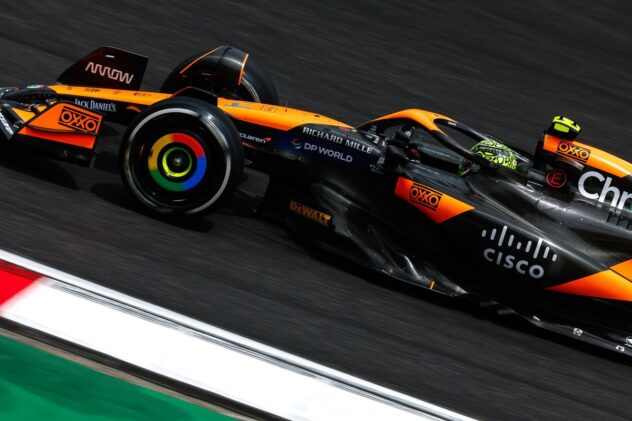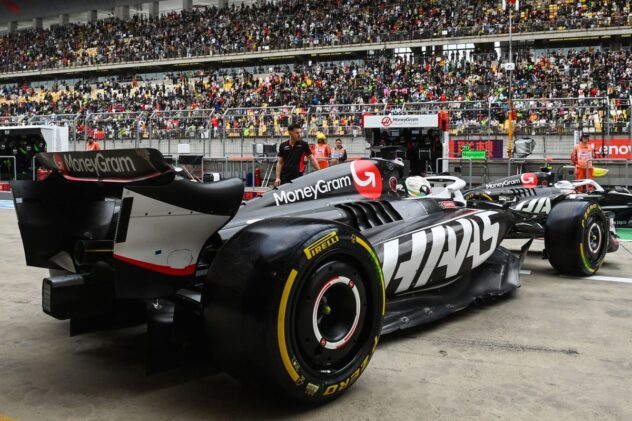Fortress Anfield dominates the skyline as new Main Stand opens for business
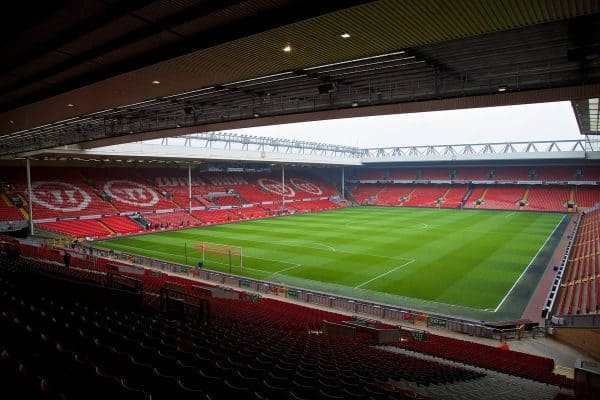
The redevelopment of Anfield under FSG started with the new main stand and has proved to be a significant step forwards in Liverpool’s re-emergence.
Prior to the arrival of FSG, previous owners George Gillett and Tom Hicks had announced their intention to scrap an earlier design and build a new, more ambitious stadium in Stanley Park.
It would accommodate 60,000 fans, with a potential for 73,000, and was initially signposted to be ready for the 2011/12 season.
It never happened and their plans for the new stadium would end up costing the club a staggering £50 million.
When John W Henry arrived on Merseyside his preference was to remain at Anfield and redevelop, but due to planning constraints and the associated costs, it became clear that it was not a feasible move.
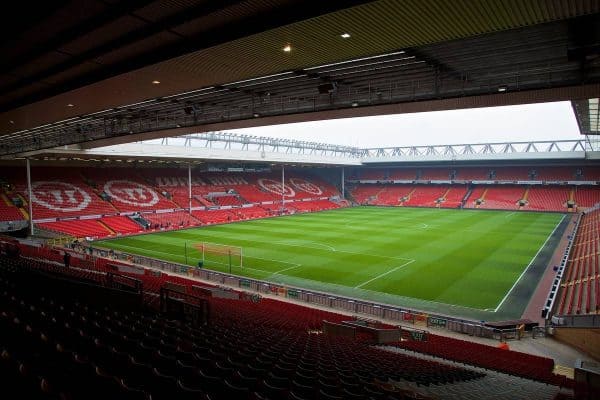
The plan to relocate Liverpool’s home to Stanley Park under the new owners surfaced in January 2012, 10 years after the very first announcement to build a 55,000-seater stadium in the park.
And while finding a swift stadium solution was firmly on the agenda, for Henry the importance of solidifying the Reds’ finances, which were left in disarray due to the previous owners, came above all else – new stadium or not.
“Our future is based not on a stadium issue but on building a strong football club that can compete with anyone in Europe. This will be principally driven financially by our commercial strengths globally,” he said.
FSG had long favoured remodelling Anfield, as they did with the Boston Red Sox, but continued to keep supporters in the dark.
But by October 2012, Liverpool had ditched plans to move to a new stadium and would instead remain in their spiritual home and expand and redevelop parts of Anfield.
To first move ahead with the Main Stand, Liverpool first needed to “acquire a bunch of privately owned property around the stadium,” before planning and then entering the building process.
It was a painfully slow and frustrating process as issues pertaining to the purchasing of properties delayed the club’s plans, meaning that it was not until April 2014, that the designs were unveiled to see Anfield’s capacity rise from 45,000 to 58,000.
The designs and plans submitted were in two stages, first expanding the Main Stand and second to redevelop the Anfield Road end, the latter of which would not start until the former had been completed.
The new £115m three-tier stand would be completed for the start of the 2016/17 season, with the existing main stand retained to remain in use on matchdays until the completion of the 2015//16 season while construction of the stand took place directly behind the existing stand.
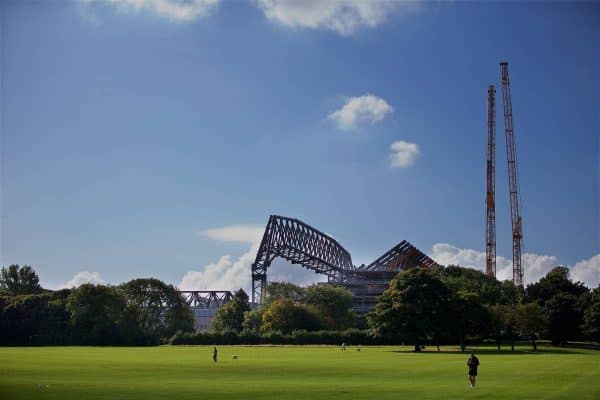
The concrete floors, steel frame and the main trust, which dominates the skyline, was built and subsequently lifted during the remarkable process before internal work started and the two were connected to form one building.
And after the final home game at Anfield against Chelsea in 2015/16, the existing seats and roof were removed and the stand was then transformed and unveiled on September 9, 2016.
Less than a year after Jurgen Klopp’s arrival, plans which had been laid out long before he stepped foot in Liverpool were finally completed and he would lead his team out in front of a record-breaking crowd against Leicester.
In the space of 614 days, Anfield’s capacity had risen to 54,000 and not since the final day of the 1976/77 season, when over 55,500 fans watched on as the Reds clinched their 10th league title, had as many fans watched on.
“Staying here at Anfield is critical to maintaining the special feeling that separates our club from equally illustrious rivals,” Liverpool chairmen Tom Werner said at the unveiling.
And since the new stand has been in place, Liverpool have lost just seven games across all competitions – with just two of those coming in the Premier League.
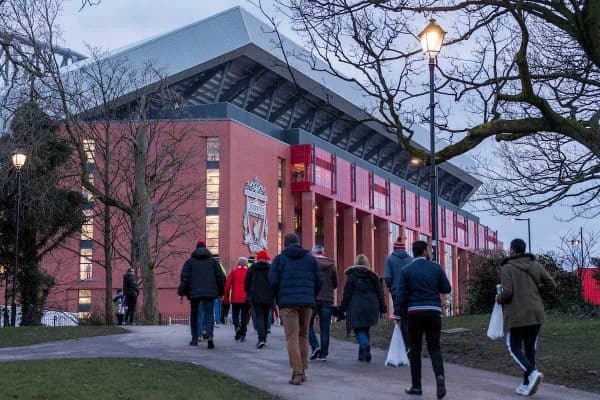
The stadium has since witnessed a flurry of nights which will go down in Anfield folklore, including fixtures against Man City, Roma and Barcelona, and its erection has mirrored that of Liverpool’s exponential rise.
While financially the club saw matchday revenue rise to £74 million for 2016/17 which now stands at over £90 million from club accounts in 2018/19, FSG’s decision has proven imperative for the club’s future.
The stand has proved to be a major success and has propelled Liverpool Football Club back among the elite off the field, while Klopp’s side does the business to keep them there on it.
A further £60 million expansion for the Anfield Road end is in the works to take the stadium’s capacity beyond the 60,000 mark by 2022, required steps to ensure Anfield’s cauldron grows louder and constantly remains a fortress to be feared.













